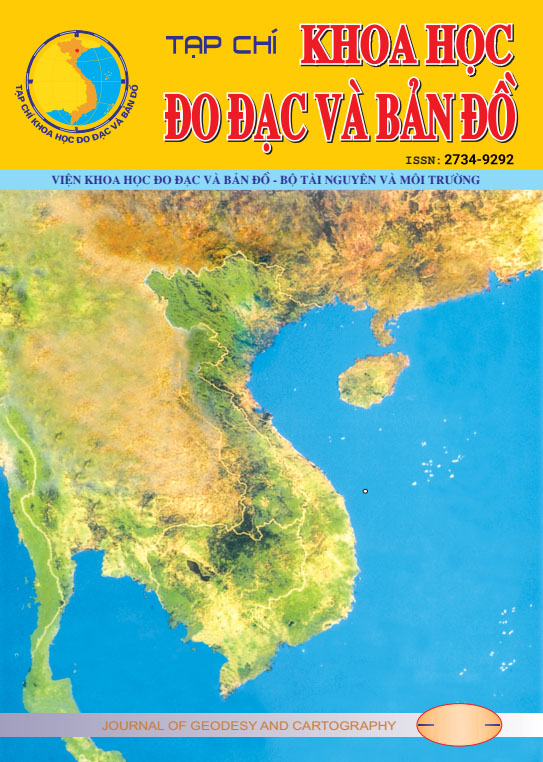Abstract
In recent years, NDVI has been used to study climate change through vegetation monitoring and biomass assessment. However, due to the effects of the particular atmosphere (especially aerosols) have changed NDVI values which extracted from remote sensing data. The problem is to find an index that is less affected by the atmosphere. By empirical method, this study find the relationship between the vegetation indices (NDVI, AFRI, ARVI) under the influence of aerosols, and also the relationship between the vegetation indices and the aerosol. On that basis, choose the most suitable indicators for climate change monitoring. The content of this study consist soft threemain compo-nents: 1/ creating vegetation indices; particularly “Atmospherically Resistant Vegetation Index, ARVI“ and “Aerosol-Free Vegetation Index, AFRI“; 2/ extracting aerosol from the Landsat imagery; 3/ finding the relationship between the vegetation indices and the aerosols. The results show that the correlation between AFRI and NDVI changes by AOD value (0.76 in high-AOD area, 0.46 in low-AOD area). This relationship allows using vegetation indices to monitor climate change. The results also show that AFRI is least affected by aerosol comparing NDVI and ARVI. Therefore, in high-AOD area, AFRI should be used to monitor vegetation instead of NDVI
PDF (Tiếng Việt)
| Download: 55
Downloads
Download data is not yet available.

